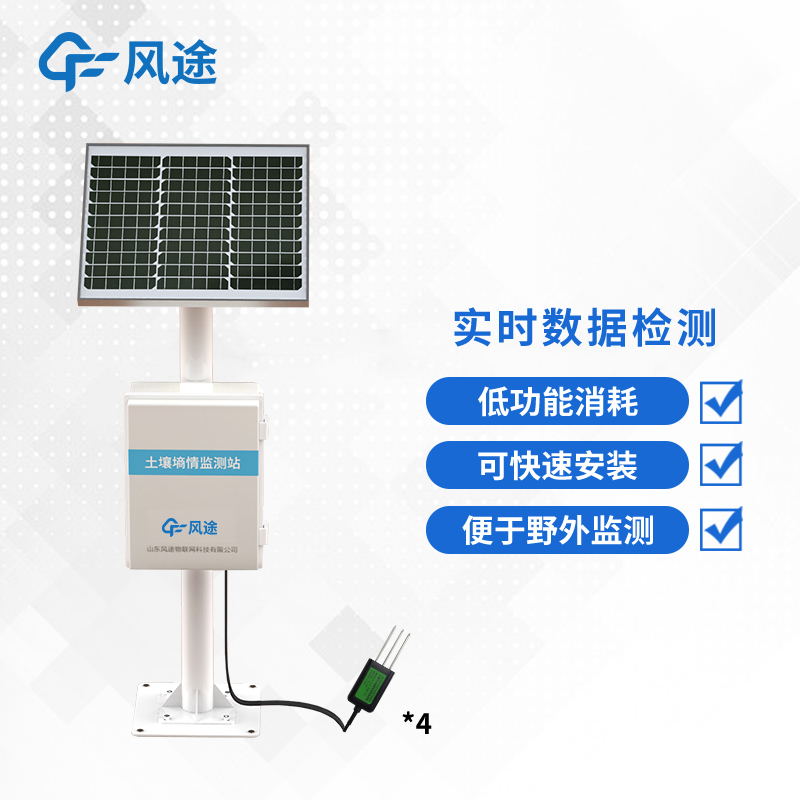Shandong Fengtu IOT Technology Co., Ltd
Sales Manager:Ms. Emily Wang
Cel,Whatsapp,Wechat:+86 15898932201
Email:info@fengtutec.com
Add:No. 155 Optoelectronic Industry Accelerator, Gaoxin District, Weifang, Shandong, China

Sales Manager:Ms. Emily Wang
Cel,Whatsapp,Wechat:+86 15898932201
Email:info@fengtutec.com
Add:No. 155 Optoelectronic Industry Accelerator, Gaoxin District, Weifang, Shandong, China
time:2024-06-18 08:37:08 source:Weather Station viewed:708 time
Soil is the bedrock of crop growth, providing water, nutrients, and other key resources. Five major factors - matrices, climate, biology, topography and time - shape the characteristics of soil. A soil census is a comprehensive examination of the condition of soils, which is essential for ensuring food security and implementing land management strategies. This census focuses on arable land, garden land, forest land and grassland, helping us to understand the current status of soils and providing a scientific basis for improving land-use efficiency and securing food production.
Long-term mechanised farming may lead to tightening of the soil, thinning of the tillage layer and even soil crusting, which will undoubtedly have a negative impact on soil structure. In order to effectively monitor and improve soil conditions, the automatic soil moisture monitoring station plays an important role.
It is capable of on-site testing of soil moisture, temperature, salinity and other key indicators around the clock. Its advantage lies in its ability to collect soil moisture data automatically without supervision and transmit the data to the monitoring centre in real time through wired or wireless means, such as GPRS and Bluetooth. In this way, we can monitor the soil status 24 hours a day and analyse the dynamic changes of soil moisture in depth through the generated reports.
The soil moisture monitoring station is equipped with moisture and temperature sensors which are capable of measuring the volumetric moisture content and temperature of the soil in real time. By connecting with professional data collectors and software platforms, the monitoring data can be effectively stored and processed to provide a scientific basis for agricultural decision-making.
Monitoring soil temperature, moisture and water level helps farmers to irrigate more rationally, saving water and preventing the loss of soil nutrients through over-irrigation. The monitoring station can also detect nitrogen, phosphorus and potassium in the soil, as well as dissolved oxygen and pH, helping farmers to understand the soil nutrient status, guiding them to apply fertilisers more accurately to improve crop yields and reduce environmental pollution.

Windway Technology is a manufacturer of river flow monitoring systems and has rich practical experience in this field. Currently, we are mainly engaged in the design, development and sales of river flow monitoring systems, and are committed to providing professional solutions to our customers, and a...
The Ultrasonic Wind Velocity and Direction Meter is a modern wind measurement device whose main purpose is to measure wind speed and direction. It uses ultrasonic technology to accurately measure wind speed and direction, and also has the advantages of fast response, no calibration and easy installa...
The construction of ship weather stations is not only of great significance to marine scientific research, but also plays a very important role in safeguarding the development of the national economy. With the rapid development of my country's socialist modernization construction and the signifi...
Miniature visibility meter is an instrument for real-time measurement of visibility in the air. It can measure visibility indicators and provide accurate information support and basis, which is of great significance in the fields of weather forecasting, transportation, aviation, pollution monitoring...